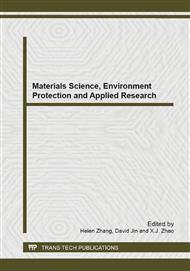p.400
p.404
p.408
p.412
p.416
p.421
p.425
p.429
p.433
Comparative Environmental Analysis of the Effects of Different Salinity Levels on Growth and Physiological Status of Nipponbare Rice
Abstract:
Salinity is a major environmental constraint limiting crop growth and yield in worldwide. This paper compared the salt induced damages to Nipponbare rice at germination and seedling stages. All rice samples were treated with four levels of salinity, growth and physiological status were then measured. Dose-dependent changes in rice growth parameters and peroxidase activity were observed. The growth parameters including germination percentages, germination indexes, root numbers, root lengths, shoot lengths and fresh weights decreased significantly at germination and early seedling stages when treated with NaCl greater than 100 mM. However, 100 mM NaCl was not enough to bring significant change of enzyme activity between the salt treated and untreated rice at late seedling stage, this suggests that rice at late seedling stage has stronger self-adjustment ability and more resistant to salt toxicity than that at early seedling stage. More serious inhibition of roots growth was also observed than that of shoots under salt stresses. This work is helpful for the development of protection strategy for rice production in saline areas.
Info:
Periodical:
Pages:
416-420
Citation:
Online since:
March 2014
Authors:
Keywords:
Price:
Сopyright:
© 2014 Trans Tech Publications Ltd. All Rights Reserved
Share:
Citation:


